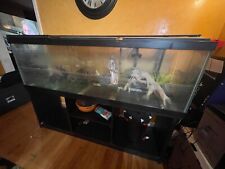Pet Cloning

The dog we've had for 18 years just passes away, is pet cloning common these days?

Pet Cloning: Furry Friends Reunited?
The term “clone” comes from the Ancient Greek for “twig”, and refers to the process by which a new plant can be created from a twig. In biology, it is the producing of genetically identical individuals.
For the very wealthy who cannot face the loss of a much-loved household animal, pet cloning is one genetically engineered solution.
In 2004, the first pet was commercially cloned for a north Texas woman, who paid $50,000 to have a copy of her cat Little Nicky. Four years later, a limited commercial dog cloning service was launched following the announcement of the successful cloning of a family dog called Missy, a mongrel rescued from a dog pound. The service closed in September 2009.
In July 2008, Seoul National University made five clones of pet dog Booger for its owner in California, charging her $50,000.
The cloning of the first pet followed on from the first successful mammalian cloning, of Dolly the sheep, in Edinburgh in 1996, from a cell in a ewe’s udder. Then along came Polly, a genetically modified lamb. Since then, numerous monkeys and cattle have all successfully been cloned, and food is being produced across the world from animals descended from clones. More than a decade ago, the first cloned feline, inevitably called CopyCat, was born.
Dogs have proved difficult since you need a lot of eggs to be given to the surrogate mother – and canines produce very few. Cloning the first pooch proved much harder than originally envisaged.
Why it’s Controversial
Commercial cloning has been criticized by animal welfare organizations as well as the Humane Society. In 2005, a proposed bill to ban the sale or transfer of cloned pets in California was voted down by the State Assembly.
Some critics say commercial pet cloners encourage potential clients to believe that their cloned animals will be indistinguishable from their old pets.
While science fiction can give the impression that clones emerge full-grown from machines, and are indistinguishable from their predecessors, that’s not the reality. Environment and experience affect behavior as much as genes, and so the behavior of an animal clone and its genetic donor will be no more alike than, say that of identical twins.
Equally, the process of converting an adult cell to an embryonic one is rarely, if ever, complete, and can be fraught with mistakes. Even if DNA is identical, the way it is presented is almost certainly going to be different, leading to a less than perfect replica of a beloved pet. “Anyone who thinks they’re going to get Fluffy back is gravely mistaken,” says one chief scientific officer at stem cell research firm.
Another anti-cloning argument states that it is not ethical for anyone to obtain animals in this way via commercial sources while so many creatures are homeless, living as strays or in shelters.
Some also argue that cloning attempts have high failure rates, that animals that are used in cloning research are likely to suffer harm, and that cloned pets could have significant health issues later on in life. There even concerns that pet cloning could set a precedent for the cloning of people.
However, those who defend it claim that pet cloning does not exacerbate animal homelessness, that the animals involved are treated humanely, that the owners are happy and there is a demand for it. Equally, proponents of cloning stress that the practise contributes to scientific, medical and veterinary knowledge, and could help preserve endangered cousins of the cat and dog. They also stress that clone is no less humane than natural breeding.
Today much of the pet cloning industry is found in South Korea, where, reportedly, ethical standards are not as high as those in the US or Europe. (There are even reports that some pooches used as surrogate mothers or egg donors are afterwards sent back to the farms where they originally came from, and may be killed and eaten.)
In all, it’s clear that the pet cloning industry is dwindling, particularly in the current global economic climate and, given the costs involved. Commercial cloning hasn’t taken off in the way some may have envisaged.
However, there are some who still do it. In January this year New Yorker Danielle Tarantola paid $50,000 for the cloning procedure using pet dog Trouble’s DNA to create an identical pooch.

Kreyer Chilly Max 50 | Glycol Chiller/Heater | 1.8 Ton | 21,840 BTU Cooling Cap
$3800.00
Fish Tank Lot, FX6 Filters, Other Filters, Heaters, Lights, 75/125/220 Gallons
$2300.00
Waters 2795 Heater Chiller 700001066
$900.00
F700 Water Heater, 6 Gal, 120V, 100 PSI, Horizontal Mount, Double-Wall Front Hea
$1072.88
Premium Water Heater - 3 or 6-Gallon Capacity - 120V - Perfect for Boats and RV
$997.20
Premium Water Heater - 3 or 6-Gallon White Epoxy Electric Heat Exchanger
$942.91
Premium Water Heater - 3 or 6-Gallon Capacity - 120V - Perfect for Boats and RV
$931.99
Premium Water Heater - 3 or 6-Gallon Capacity - 120V - Perfect for Boats and RV
$915.99
Premium Water Heater - 3 or 6-Gallon Capacity - 120V - Perfect for Boats and RV
$915.99
Premium Water Heater - 3 or 6-Gallon Capacity - 120V - Perfect for Boats and RV
$915.99









